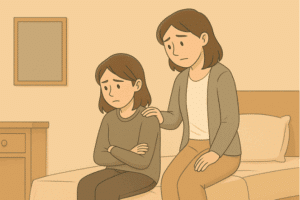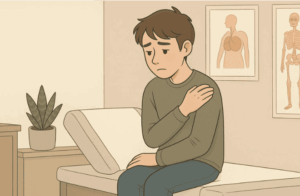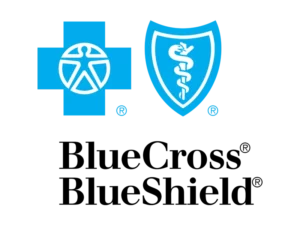Mental Health Resources for Teens & Families
Welcome to our Teen Mental Health Resources Hub—your go-to place for trustworthy, relatable, and compassionate support. Here, teens and their families can explore helpful guides on mental health challenges, treatment options, healthy coping skills, and tools for everyday resilience. Whether you’re a teen facing anxiety, depression, or stress, or a parent looking for ways to better understand and support your child, our goal is to provide the clarity, guidance, and hope you need. Start exploring today and take the next step toward a brighter, healthier future together.

Table of Contents
Explore Comprehensive Mental Health Guides
At Mission Prep Teen Treatment, we strive to provide a unique and innovative therapeutic approach that blends time-tested therapeutic approaches with innovative interventions.
STEP ONE
Complete a brief form to receive a prompt call back from a member of our experienced and compassionate admissions staff. All communication is 100% Confidential.
STEP TWO
Explore our unique, result-oriented clinical approach, treatment methods, and the many ways our approach can benefit you.
STEP THREE
Explore our trusted treatment locations designed to provide compassionate, personalized care in a safe and supportive environment.
STEP FOUR
Mission Prep Teen Treatment is committed to helping you understand treatment costs and explore available financial resources to make treatment accessible and manageable.
Mental Health Guides by Condition
Good mental health is vital for everyone, without a shadow of a doubt. But achieving it can take on a new level of complexity during the teenage years. Adolescence is a unique period of rapid transition, making teens uniquely vulnerable to mental health struggles.
In fact, research suggests around 20% of adolescents experience a mental health problem, with depression and anxiety being the most common.
From academic pressures and social relationships to navigating their identity in a fast-paced world, there’s a variety of stressors that can contribute to mental health disorders in teenagers. Plus, the stigma surrounding mental health problems means many choose to remain silent.
The good news? Understanding teen mental illness and providing early recognition and support can make a huge difference. By encouraging open conversations and normalizing help-seeking, we can empower teens to reach out and take charge of their mental well-being. Explore our mental health guides by condition to help further your understanding of the complexities each condition may present.
Planning for Mental Health Treatment
Sometimes, mental health challenges go beyond what can be handled at home. Residential treatment for teens offers structured support and specialized therapies to aid recovery and ease distress.
Residential Treatment Programs provide a safe, structured environment with 24/7 care where teens can receive personalized therapy. By temporarily removing teens from daily stressors and immersing them in supportive settings, these programs often foster a sense of community and are geared towards lasting improvements.
Inpatient Mental Health Care is designed for short-term stabilization during mental health crises, such as suicidal ideation or psychosis. In these hospital-based settings, teens receive 24/7 medical and therapeutic support to help manage distress. Once stabilized, they are supported during the transition to outpatient or residential care for continued recovery.
Specialized Youth Therapies. Both residential and inpatient programs provide evidence-based therapies like Cognitive Behavioral Therapy (CBT) or Dialectical Behavior Therapy (DBT). These therapy options for young adults can be highly effective for stabilizing symptoms, teaching coping mechanisms, and addressing underlying struggles – providing teens with the tools for achieving long-term resilience.
Explore our mental health treatment planning guides to help further your understanding of the entire treatment process for your teen or contact us directly for more information.
Mental Health Therapy Options for Teens
Understanding the causes of teen mental health symptoms is key to finding the right therapy options for treatment. Mental health challenges in teens often stem from a combination of biological, environmental, and social factors. Here are some common risk factors:
- Genetic Predisposition: A family history of mental health conditions can increase a teen’s likelihood of experiencing similar issues, particularly for conditions like schizophrenia or bipolar disorder.
- Family Dynamics: Unstable home environments or parental conflict can contribute to emotional distress in teens – sometimes causing mental health conditions to develop.
- Peer Pressure: Social expectations and pressure to fit in can lead to anxiety, low self-esteem, and risky behaviors.
- Trauma: Experiences of abuse, violence, or significant loss can lead to conditions like PTSD or depression.
- Social Media: Excessive social media use can intensify feelings of inadequacy, comparison, and cyberbullying, negatively impacting teens’ self-esteem and mental health.
- Academic Stress: High expectations to excel in school can cause overwhelm, leading to chronic stress, burnout, and feelings of inadequacy.
Clinicians typically use a combination of clinical interviews, questionnaires, and behavioral assessments to diagnose mental health conditions. Family may also be interviewed to gain an overall understanding of the teen’s environment and how it’s impacting them. Explore different types of therapy guides today.
Mental Health Treatment Medications for Teens
For many teens, medication can play an important role in feeling better and managing mental health challenges. The type of medication that works best depends on your specific condition and the symptoms you’re experiencing. Common examples include:
Antidepressants to help with depression, anxiety, and low mood
Antipsychotics for conditions such as schizophrenia or severe mood disorders
Mood stabilizers to help manage bipolar disorder and intense emotional swings
These medications work by balancing certain brain chemicals that can impact thoughts, feelings, and behaviors—making it easier to focus, connect with others, and handle daily life. Every teen’s journey is different, so your treatment plan should be tailored to your needs. Talking with a qualified healthcare provider is the best way to find the right option for you.
Specialized Mental Health Support Groups
Studies show that having people you can count on—whether it’s friends, family, or a trusted support group—can help protect your mental health. For teens, staying connected and building strong, healthy relationships creates a safety net during tough times. For families, actively listening and showing up for each other strengthens bonds and makes it easier to face challenges together.
Legal Rights in Teen Mental Healthcare
Understanding your legal rights is an important part of getting the mental health care you need. For teens, this means knowing when you can ask for help on your own, what kinds of treatment require parental consent, and how your privacy is protected. For families, it means understanding the laws that guide consent, confidentiality, and access to medical records, as well as the responsibilities of schools and healthcare providers. This guide breaks down these rights in plain language so teens and their families can make informed decisions, advocate for themselves, and feel confident navigating the mental health system.
















